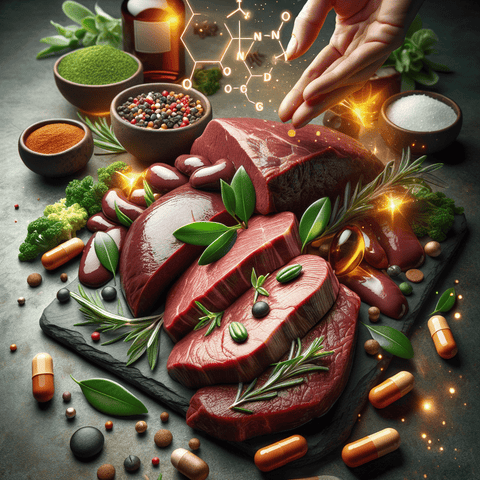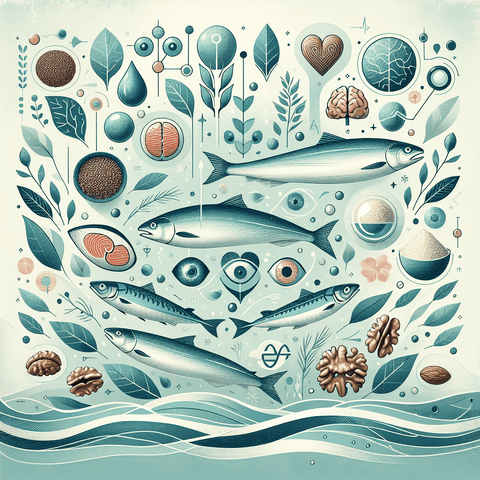Meat Containing Vitamin A: The Top Source to Boost Your Nutritional Intake
Vitamin A plays a critical role in supporting human health. From vision and immune function to reproduction and cellular communication, this fat-soluble vitamin is essential for maintaining vital systems in the body. While many people associate vitamin A with colorful fruits and vegetables—due to compounds like beta-carotene found in carrots and sweet potatoes—animal products, particularly certain meats, offer a potent, preformed version known as retinol. Retinol is the active form of vitamin A that your body can use immediately, unlike plant-sourced carotenoids, which must first be converted by the body.
For individuals interested in optimizing health through their diet or supplement routines, incorporating meats containing vitamin A presents a natural and highly bioavailable source. Among meat options, animal liver stands out as the most concentrated source of vitamin A. However, other meats, particularly organ and some muscle meats, also contribute valuable levels of this nutrient, making a varied meat-inclusive diet a viable strategy for meeting daily vitamin A requirements.
Consumers turning to nutritional supplements often seek out vitamin A in combination with other essential micronutrients to maintain immune health, support vision, and bolster growth and development. While supplementing can be valuable, understanding the food sources of nutrients—particularly bioavailable ones—is equally critical. In this comprehensive guide, we unpack the various meats rich in vitamin A, how they benefit your health, and how to incorporate them effectively alongside supplement options.
Liver-Rich in Vitamin A: The Ultimate Superfood for Vitamin A Power
If there's one meat that dominates the discussion of vitamin A, it's liver. Often referred to as a nutritional powerhouse, liver from animals such as cows, pigs, chickens, and even fish contains extremely high concentrations of preformed vitamin A, in the form of retinol. Liver’s nutritional bounty doesn’t stop at vitamin A; it is also rich in iron, B vitamins, and essential minerals, making it one of the most nutrient-dense foods available.
Let’s break down vitamin A content in various types of animal liver (values per 100 grams):
- Beef liver: Approximately 9,000 to 25,000 IU (3,000 to 8,300 µg RAE) of vitamin A
- Chicken liver: Around 13,000 to 16,000 IU (4,300 to 5,300 µg RAE)
- Pork liver: Close to 15,000 IU (5,000 µg RAE)
- Lamb liver: Between 7,000 to 12,000 IU (2,300 to 4,000 µg RAE)
- Cod liver (oil): Up to 100,000 IU per tablespoon (33,000 µg RAE), though this is technically an extracted supplement, not whole meat
Among these, beef and chicken liver are among the most accessible and economical for consumers looking to boost their vitamin A through food. However, due to its potency, liver should be consumed in moderation. Overconsumption of preformed vitamin A can lead to toxicity, known as hypervitaminosis A, particularly when dietary intake is paired with high-dose supplements.
Liver is commonly included in high-quality nutritional supplement formulations for its overall nutrient profile. Companies often use desiccated liver powders or extracts for this purpose, maintaining the vitamin A content while making it easier to consume for those who may not enjoy the taste or texture of cooked liver. Choosing liver-sourced supplements can provide a convenient way to benefit from the high vitamin A content while controlling dosage precisely.
Vitamin A Sources in Meats: Beyond Liver—Other Meat Types That Contribute
Although liver takes center stage in discussions of vitamin A-rich meats, it’s critical not to overlook other meat types that contribute smaller yet still meaningful amounts of this essential vitamin. These include muscle meats, such as beef, chicken, and pork cuts, as well as other organ meats such as kidneys and hearts. While not as concentrated in vitamin A as liver, these provide additional diversity and variety in your diet.
Muscle meats, for example, tend to have lower but not insignificant levels of preformed vitamin A. Here are some approximate values per 100 grams of cooked meat:
- Beef (chuck roast): 20-40 IU
- Pork loin: Around 70 IU
- Chicken breast: 13 IU
- Turkey (dark meat): Approximately 60 IU
While these levels are not considerable on their own, combined with other dietary sources or consumed in large quantities, they contribute to overall intake. For comparison, the Recommended Dietary Allowance (RDA) for vitamin A is 900 µg RAE (3,000 IU) for adult men and 700 µg RAE (2,333 IU) for adult women.
Some processed meats, like liverwurst or pâté, especially those made with liver, can contain significant levels of vitamin A. However, consumers should be aware of added fats, sodium, and preservatives when choosing processed options.
Cooking methods also influence vitamin A retention. Vitamin A is fat-soluble and relatively heat-stable, but exposure to high heat over extended periods may degrade some amount of the vitamin. Grilling, roasting, or slow cooking are generally good methods to preserve vitamin integrity. Boiling and frying, especially at high temperatures, may result in nutrient losses. For optimal nutrient retention, gentle cooking and minimal processing are recommended.
Including a variety of meats in your diet not only supplies vitamin A but also complements intake of other micronutrients like zinc, selenium, and B vitamins. When tailored to individual preferences and health considerations, a diversified meat-based diet can be a powerful tool in supporting overall nutrient intake alongside appropriate supplements like magnesium or vitamin K.
Retinol Levels in Meat: Understanding the Concentration of Active Vitamin A
Let’s delve deeper into the science behind vitamin A in meat. Unlike plant-based sources, which offer carotenoids requiring conversion, animal-derived vitamin A is in the form of retinol—biologically active and immediately usable by the body. This makes animal-sourced vitamin A more bioavailable and effective at fulfilling bodily needs.
Retinol levels vary significantly among different meats, depending primarily on the organ or tissue in question. While liver contains the highest concentrations, other meats vary based on fat content and the function of the tissue. For example, animal fat holds more vitamin A than lean muscle, highlighting the role of lipid compartments in storing fat-soluble vitamins.
Here’s a comparison between raw and cooked liver samples to illustrate how cooking affects retinol content per 100 grams:
- Raw beef liver: Up to 27,000 IU of vitamin A
- Cooked beef liver: Approximately 15,000 to 20,000 IU, depending on the cooking method
Though cooking does result in some loss, the levels remain substantially high and nutritionally significant. Contrary to many nutrients that are water-soluble and susceptible to loss during cooking (like vitamin C), vitamin A is relatively resilient when handled properly.
It’s worth noting the distinction between preformed vitamin A (retinol) and provitamin A carotenoids (beta-carotene, alpha-carotene, etc.). Only preformed vitamin A, found in animal products, qualifies as "active" vitamin A. Carotenoids need to be enzymatically converted in the intestinal mucosa, a process which varies based on genetics, nutritional status, and gut health. For this reason, meat-based vitamin A sources are often preferred in premium nutritional products targeting immune and vision support, such as those found in the omega-3 supplement line for holistic support.
For nutrition-conscious consumers, understanding these biochemical differences is vital when planning a diet or selecting supplements. Choosing bioavailable sources enables more predictable and efficient utilization by the body, particularly for individuals with impaired vitamin A conversion or absorption capacity.
Animal Liver Nutrients: A Nutrient-Dense Meat for Complete Health Benefits
Beyond vitamin A, liver is a veritable micronutrient goldmine. Its unique nutritional density makes it one of the most complete animal-based foods in existence. In 100 grams of beef liver, consumers get more than just their daily vitamin A—it includes a powerful mix of the following nutrients:
- Iron: Especially heme iron, efficiently absorbed and instrumental in red blood cell formation
- Vitamin B12: Up to 1,000% of the RDA
- Folate (Vitamin B9): Critical for DNA synthesis and repair
- Riboflavin (Vitamin B2), Niacin (Vitamin B3), and Pantothenic Acid (B5): Vital for metabolism
- Choline: Important for liver function and brain health
- Copper, Zinc, and Selenium: Trace minerals involved in antioxidant protection and enzyme function
What makes these nutrients remarkable is how they synergistically interact with vitamin A. For example, vitamin A and iron work together to support erythropoiesis (formation of new red blood cells), and both rely on sufficient B12 and folate for optimal function. Zinc facilitates the mobilization of vitamin A from storage in the liver to peripheral tissues, enhancing its bioavailability.
Such nutrient synergy justifies why desiccated liver is often a mainstay in high-efficiency nutritional supplements designed for energy, immunity, and athletic performance. These formulations capitalize on liver’s natural complexity to deliver multiple values in one dose, offering a whole-food solution as opposed to synthetic, isolated compounds that may lack effective absorption.
However, it’s important to manage dosage, especially in supplement form where potency is concentrated. Consumers should follow dosage labels carefully and consult a healthcare professional if they are unsure how liver-based supplements fit into their regimen.
Vitamin A Meat Content: Quantifying Vitamin A Levels in Different Meat Cuts and Types
For those looking to manage their vitamin A intake with precision, understanding exact content in meats becomes essential. Below is a summary table estimating average vitamin A content per 100 grams of various meat types and cuts:
| Meat Type | Cut/Part | Vitamin A (IU per 100g) |
|---|---|---|
| Beef | Liver | 20,000 IU |
| Chicken | Liver | 14,000 IU |
| Pork | Liver | 15,000 IU |
| Lamb | Liver | 12,000 IU |
| Beef | Muscle meats | 25-40 IU |
| Chicken | Breast (cooked) | 13 IU |
| Processed | Liverwurst | 8,000-10,000 IU |
Variability in values arises depending on factors like the animal’s species, age, diet, and how the meat is processed. Grass-fed and pasture-raised animals often exhibit better fat-soluble vitamin profiles, including vitamin A, due to their more natural diets rich in beta-carotene and vitamin precursors.
The key takeaway is that consumers aiming to maximize their retinol intake through diet should prioritize liver cuts and consider liver-based processed meats or supplements when culinary preferences or lifestyle make regular liver consumption difficult.
Integrating Meat-Based Vitamin A Sources into Your Nutritional Supplement Routine
Adopting meat-rich dietary sources of vitamin A is a valuable strategy, but it often works best when integrated with a broader supplement routine designed to support overall micronutrient harmony. Here are some practical approaches:
- Pair liver consumption with fat: Retinol is fat-soluble, so combining it with healthy fats such as olive oil or fish-based omega-3 supplements can boost absorption.
- Use liver-based capsules or freeze-dried products: For those unable or unwilling to eat liver, supplements sourced from freeze-dried organ meats offer a potent and practical alternative.
- Monitor total intake: Especially when taking a multivitamin or immune-targeted formula that already contains vitamin A. Avoid exceeding 10,000 IU daily without medical supervision.
- Balance with other vitamins: Vitamin D, K2, E, and magnesium all play roles in metabolizing fat-soluble vitamins. Consider synergy-focused formulas available from specialized supplement providers like Topvitamine.com.
For vegetarians, meat-based vitamin A sources are obviously off the table. In such cases, supplementation is essential, especially for groups at risk like pregnant women, young children, and the elderly. Algae-derived vitamin A analogs, or supplement blends designed for plant-based consumers, can be sourced from premium suppliers, though they may have limitations in bioavailability compared to retinol.
Looking ahead, innovations in meat-based nutrient supplementation are rapidly advancing. Products that combine organ-based powders with synergists like omega-3s, magnesium, and vitamin D are gaining popularity among wellness enthusiasts who want natural, whole-food-based multinutrients in a single capsule or shelf-stable format.
Conclusion: Optimizing Your Vitamin A Intake with Meat-Containing Nutrients
Vitamin A is indispensable for human health, and meat—especially liver—serves as one of its most potent sources. While fruits and vegetables can contribute provitamin A carotenoids, animal products offer immediate, bioavailable retinol, making them invaluable in maintaining adequate vitamin A levels. Among meats, liver stands supreme, though other cuts and preparations offer supporting roles in a balanced, nutrient-dense diet.
Beyond vitamin A, liver delivers a symphony of complementary nutrients such as iron, B vitamins, and trace minerals, making it a wise inclusion in both dietary and supplement forms. The precision of liver-based supplementation allows consumers to control dosage, prevent deficiency, and support immune and cellular health effectively when used properly.
By integrating meat-derived nutrients with well-formulated supplements—like those found on Topvitamine.com—health-conscious individuals can maintain optimal vitamin A status while reaping the broader benefits of synergistic micronutrient support. Whether you're an omnivore, flexitarian, or supplement-focused wellness seeker, understanding meat’s vital role in vitamin A nutrition empowers you to make informed, effective health choices.
Q&A Section
Q: What meat contains the highest amount of vitamin A?
A: Liver, particularly beef, chicken, and pork liver, offers the highest concentration of preformed vitamin A in the form of retinol, with values reaching over 20,000 IU per 100 grams in some cases.
Q: Can I get enough vitamin A from muscle meats?
A: Muscle meats contain only trace amounts of vitamin A compared to liver. While they contribute small quantities, liver or liver-based supplements are more effective for meeting your recommended intake.
Q: How does cooking affect vitamin A content in meat?
A: Cooking can reduce vitamin A content slightly, depending on the method. Gentle cooking methods like steaming or roasting help retain more nutrients than frying or boiling at high heat.
Q: Are liver supplements as effective as eating liver?
A: High-quality liver supplements made from freeze-dried or desiccated liver can be nearly as effective, particularly when they retain the full profile of nutrients and are taken as directed.
Q: Is it possible to consume too much vitamin A from meat?
A: Yes. Vitamin A is stored in body fat and can accumulate. Regular overconsumption, particularly of liver or supplements with high doses, can lead to toxicity. Follow daily intake recommendations and consult a healthcare provider when in doubt.
Important Keywords
- Vitamin A in meat
- Liver vitamin A content
- Retinol in beef liver
- Animal liver nutrients
- Vitamin A supplement sources
- Best meat for vitamin A
- Vitamin A bioavailability in meat
- Meat-based vitamin A foods
- Liver supplements for vitamin A
- Vitamin A from animal products



